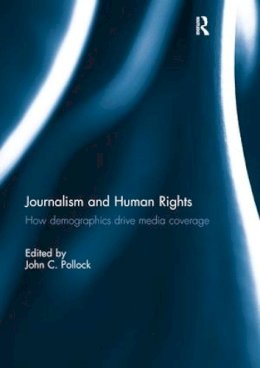John C. Pollock (Ph.D. Stanford) is Professor of communication studies at The College of New Jersey, Ewing Township, NJ. He is the author of Tilted Mirrors: Media Alignment with Political and Social Change – a Community Structure Approach (2007) and edited Media and Social Inequality: Innovations in Community Structure Research (2013, 2014). He is a media sociologist and pursues interests in health communication and media and human rights.
"Pollock and his associates show that variations in human rights coverage are related to several demographic characteristics of the cities or the countries newspapers serve. Notably, cross-national studies demonstrate that country-level indicators of female empowerment, such as female school life expectancy and female literacy rate, play a pivotal role in explaining country-level variations in human rights coverage. Equally important are findings from U.S. nationwide multi-city studies showing that newspapers favorably cover the interests of vulnerable or marginal social groups. For example, newspaper coverage of same-sex marriage was found to be more favorable in communities with a greater number of organizations marketing to the lesbian, gay, bisexual, and transgender (LGBT) community" - Masahiro Yamamoto, Journalism & Mass Communication Quarterly "The overall patterns of results reported in the book supports the theoretical proposition that the media have the ability to produce content that can challenge dominant elites and value systems and accommodate the needs of stakeholders and vulnerable. The theoretical and methodological coherence, coupled with examinations of diverse human rights issues, adds to the robustness of the proposition." - Masahiro Yamamoto, Journalism & Mass Communication Quarterly "The authors seek to answer this question: How can the makeup of society influence media coverage of some of the biggest humanitarian challenges in the contemporary world? The authors look into demographical factors in analyzing news content across both developing countries and major U.S. cities, revealing major insights on emerging human rights issues." - Soomin Seo, Journal of Communication "The comparative framework...thus allows them to compare patterns in human rights coverage in countries with different demographic traits. By doing so, the book provides an important contribution to comparative cross-national research in media studies" - Soomin Seo, Journal of Communication "Hopefully, this will inspire the next generation of communication scholars to follow suit and dig deep into the world of comparative human rights research." - Soomin Seo, Journal of Communication "Pollock and his associates show that variations in human rights coverage are related to several demographic characteristics of the cities or the countries newspapers serve. Notably, cross-national studies demonstrate that country-level indicators of female empowerment, such as female school life expectancy and female literacy rate, play a pivotal role in explaining country-level variations in human rights coverage. Equally important are findings from U.S. nationwide multi-city studies showing that newspapers favorably cover the interests of vulnerable or marginal social groups. For example, newspaper coverage of same-sex marriage was found to be more favorable in communities with a greater number of organizations marketing to the lesbian, gay, bisexual, and transgender (LGBT) community" - Masahiro Yamamoto, Journalism & Mass Communication Quarterly "The overall patterns of results reported in the book supports the theoretical proposition that the media have the ability to produce content that can challenge dominant elites and value systems and accommodate the needs of stakeholders and vulnerable. The theoretical and methodological coherence, coupled with examinations of diverse human rights issues, adds to the robustness of the proposition." - Masahiro Yamamoto, Journalism & Mass Communication Quarterly "The authors seek to answer this question: How can the makeup of society influence media coverage of some of the biggest humanitarian challenges in the contemporary world? The authors look into demographical factors in analyzing news content across both developing countries and major U.S. cities, revealing major insights on emerging human rights issues." - Soomin Seo, Journal of Communication "The comparative framework...thus allows them to compare patterns in human rights coverage in countries with different demographic traits. By doing so, the book provides an important contribution to comparative cross-national research in media studies" - Soomin Seo, Journal of Communication "Hopefully, this will inspire the next generation of communication scholars to follow suit and dig deep into the world of comparative human rights research." - Soomin Seo, Journal of Communication

